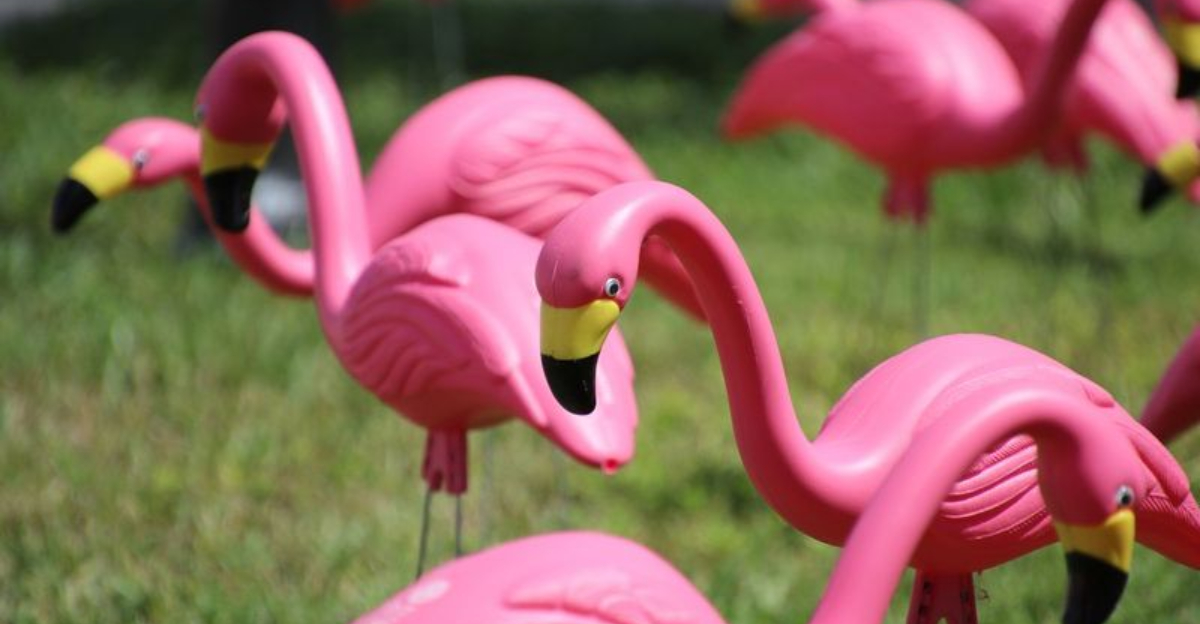Ever wondered what separates a professionally designed backyard from an amateur one? Interior designers have a keen eye for what works outdoors, but they also know exactly what to avoid.
Let’s peek behind the curtain at what these style experts would never include in their own outdoor spaces, plus the absolute no-go items that would make them cringe.
1. Plastic Lawn Flamingos

Remember those bright pink birds that used to populate suburban lawns? Professional designers run the other way when they see these kitschy classics approaching.
While they might evoke nostalgic charm for some, these plastic pink creatures scream outdated taste and lack of sophistication in design circles. Quality outdoor spaces focus on natural elements and timeless appeal instead.
2. Inflatable Kiddie Pools as Permanent Features

You’ve seen them lingering in backyards long past summer’s end – those faded blue plastic pools collecting leaves and rainwater. Designers absolutely shudder at the sight!
Not only do these temporary water features become eyesores when left out, they damage the grass beneath and signal a lack of thoughtful outdoor planning. For cooling off, professionals recommend built-in water features or proper above-ground options with dedicated spaces.
3. Mismatched Cheap Plastic Chairs

Nothing screams “I gave up on my backyard” quite like a random collection of discount store plastic chairs in clashing colors. When accumulated over time without any cohesive vision, these seating arrangements become visual chaos.
Design professionals invest in quality outdoor furniture that withstands elements while maintaining style. Even on a budget, they’d rather have fewer pieces that coordinate than a hodgepodge of plastic eyesores.
4. Overly Themed or Kitschy Garden Decor
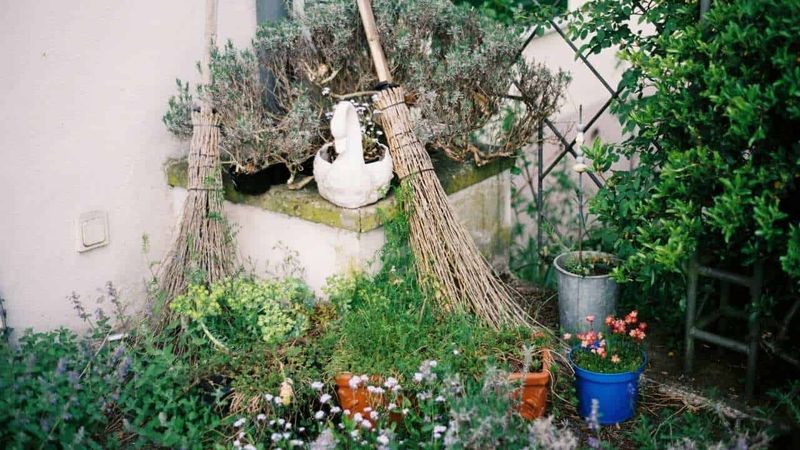
Gone overboard with that beach theme? Perhaps your garden gnome collection has taken on a life of its own? Professional designers avoid the temptation to transform backyards into theatrical sets.
While personality matters in design, restraint separates sophistication from tackiness. Instead of filling spaces with themed trinkets, designers suggest selecting a few quality statement pieces that complement the natural environment while reflecting personal style in a more subtle way.
5. Dated or Faded Plastic Outdoor Rugs
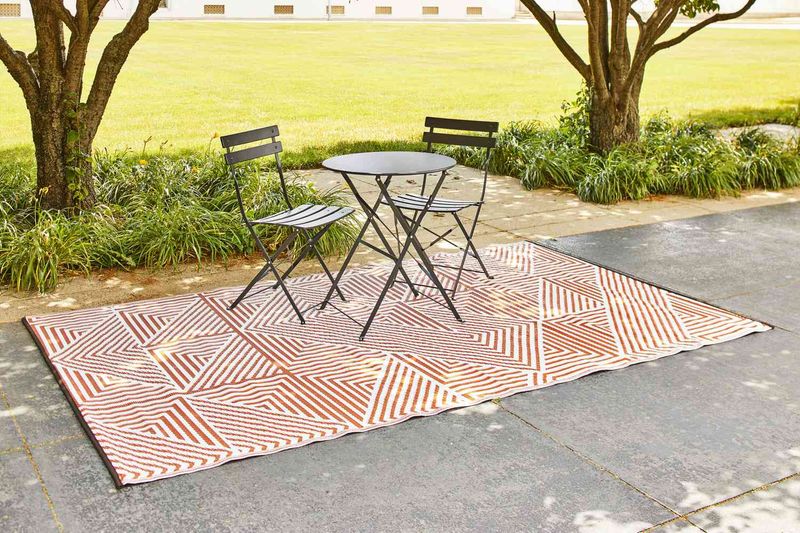
That once-vibrant outdoor rug now resembles a sad, sun-bleached remnant of its former self. Weather takes a toll on cheap plastic rugs, creating an instantly dated look that drags down your entire outdoor space.
Design professionals opt for quality outdoor textiles specifically engineered to withstand sun and moisture. When budget is a concern, they’d rather go without than display faded, curling plastic that collects mildew and looks perpetually dirty.
6. Solar Lights with Garish Color Changes
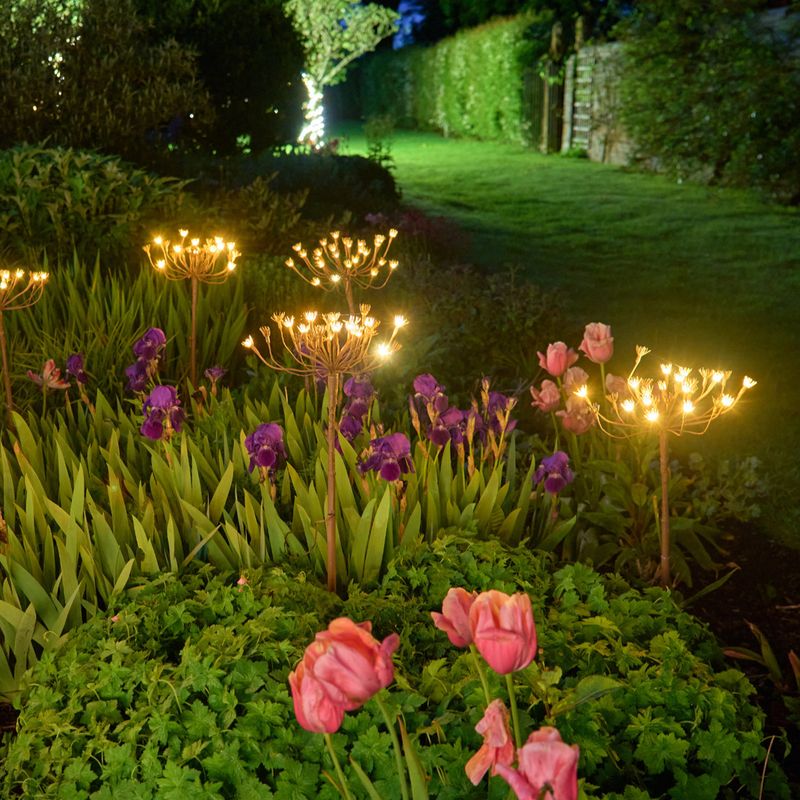
Have you noticed those color-changing solar stakes that cycle through neon hues like a miniature nightclub? While they might seem festive initially, designers view these as the lighting equivalent of a novelty ringtone.
Professional outdoor lighting creates ambiance through consistent, warm illumination that highlights architectural features and pathways. Quality lighting should enhance the space subtly rather than demanding attention with a rainbow light show every evening.
7. Cluttered, Random Planters Without Style

Wandering through garden centers and impulsively collecting mismatched containers leads to visual chaos that designers avoid at all costs. The random assortment of plastic, ceramic, and concrete vessels in competing styles creates a disjointed appearance.
Instead, professionals select planters with intentional coordination, whether through consistent materials, complementary colors, or harmonious shapes. Even with varied containers, they ensure a thoughtful relationship exists between pieces rather than a haphazard collection.
8. Worn-out Vinyl Gazebos

Those budget pop-up gazebos from big box stores might offer immediate shade, but after a season or two of weather exposure, they transform into eyesores. Sagging fabric, rusting frames, and torn corners signal neglect rather than design intention.
Professional designers invest in architectural elements built to last or opt for natural shade from trees and pergolas with climbing plants. Quality outdoor structures should enhance the landscape rather than appearing as temporary afterthoughts deteriorating in real time.
9. White Gravel Landscaping Without Contrast
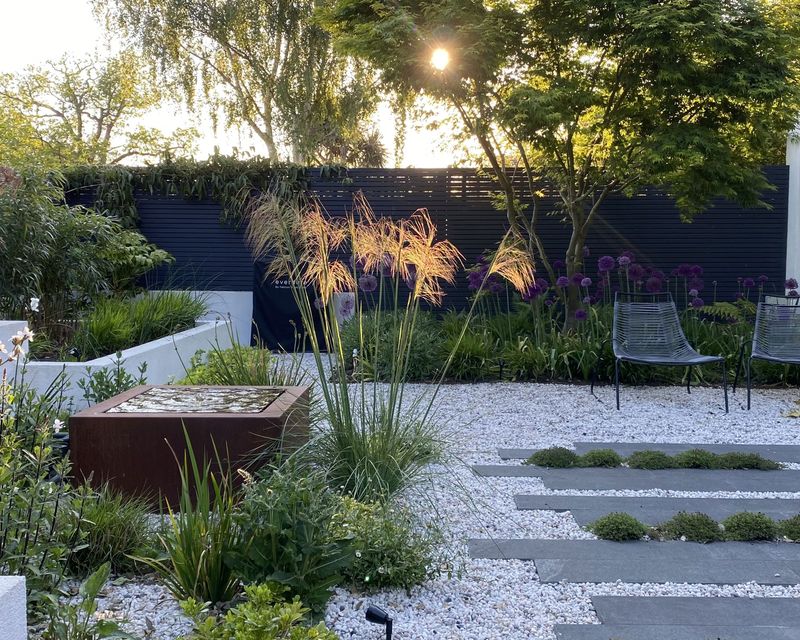
Imagine a sea of stark white rocks baking in the sun, creating glare and a sterile, lifeless appearance. This dated landscaping approach from the 1980s lacks the texture and visual interest that defines contemporary outdoor design.
When professionals use decorative stone, they incorporate varied sizes and colors that complement surrounding elements. They also ensure ample contrast through plantings that soften hardscaping and create natural balance rather than harsh, maintenance-intensive white rock beds.
10. Cheap, Peeling Iron Furniture
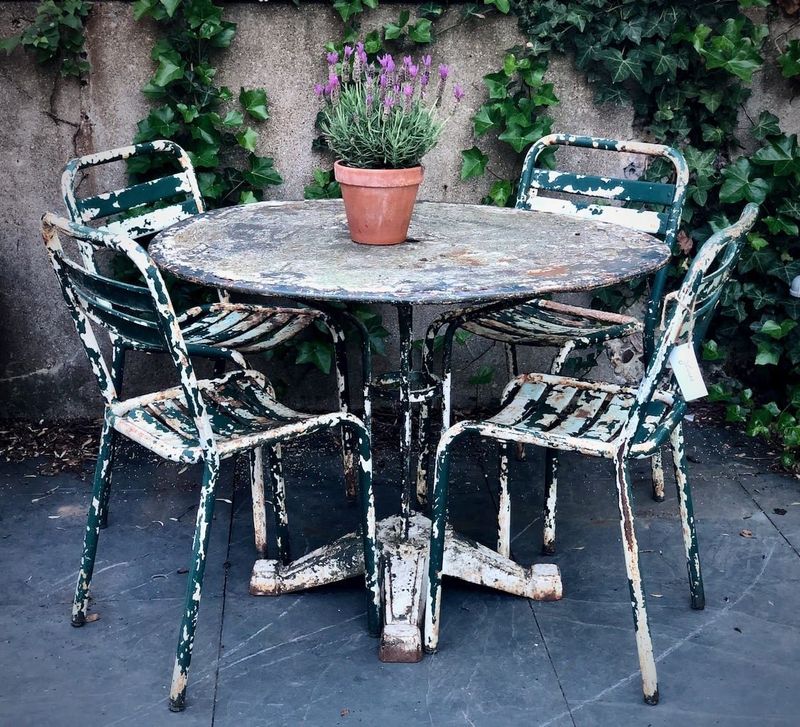
Bargain wrought iron sets might look elegant at first glance, but without proper maintenance, they quickly become rusty, peeling hazards that stain clothing and look perpetually neglected.
Quality outdoor furniture represents a significant investment for designers who understand the harsh conditions these pieces must endure. They select materials appropriate for the climate with proper protective finishes or choose alternatives like powder-coated aluminum that offers the aesthetic without the maintenance headaches.
11. Uncoordinated Paving Stones
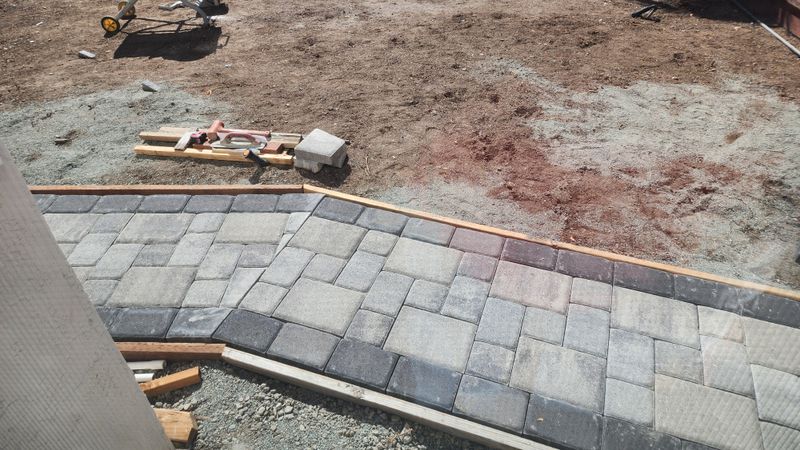
Walking across a patio with randomly mixed paving materials feels jarring and visually confusing. When homeowners combine clearance pavers without a cohesive plan, the result looks accidental rather than intentional.
Professional hardscaping follows thoughtful patterns that complement the home’s architecture. Even when mixing materials for interest, designers ensure proportions, colors, and textures work harmoniously together rather than competing for attention or appearing as though leftover materials were simply used up.
12. Fake Ivy or Plastic Privacy Screens

Artificial foliage might seem like a low-maintenance solution, but these plastic imposters quickly become sun-faded, dust-collectors that fool absolutely no one. The shiny, uniform appearance lacks the natural variation that makes real plants beautiful.
Designers prefer actual climbing plants or architectural privacy solutions that age gracefully. When greenery isn’t practical, they choose quality materials like wood or metal screens with interesting patterns rather than unconvincing plastic pretending to be something it’s not.
13. Oversized, Bright LED String Lights

While subtle string lights can create magic, those giant, primary-colored LED bulbs strung haphazardly transform elegant spaces into year-round holiday displays. The carnival-like atmosphere feels overwhelming rather than inviting.
Professional lighting design employs restraint with warm-toned, appropriately scaled fixtures. Quality outdoor lighting should enhance conversation areas subtly rather than dominating the visual experience.
14. Overgrown, Unkempt Shrubs and Weeds

Neglected landscaping sends a clear message about priorities, and it’s not one that says “design matters here.” When foundation plantings swallow windows and weeds outnumber intentional plants, the entire property suffers.
Even naturalistic or wildlife-friendly gardens follow intentional design principles rather than surrendering to chaos. Properly maintained greenery should frame and enhance architecture, not fight against it.
15. Poorly Maintained or Faded Outdoor Umbrellas
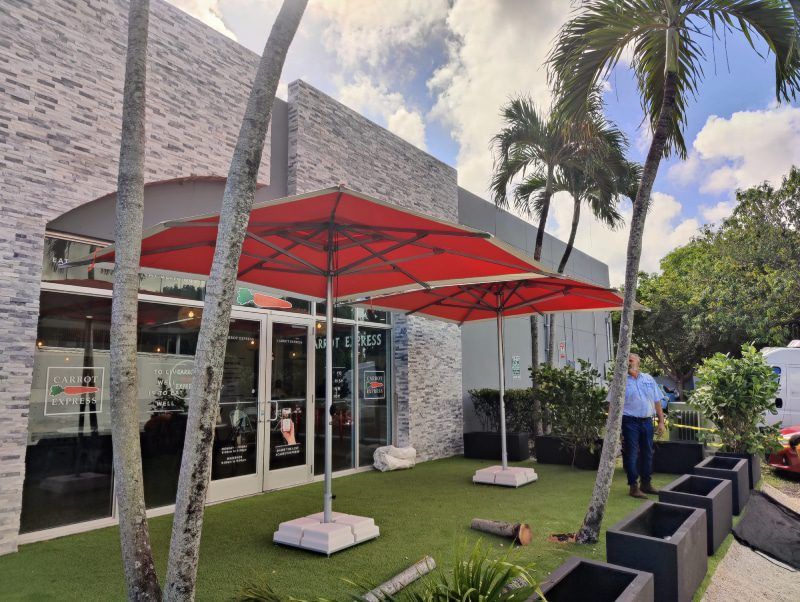
Sun-bleached, mildew-spotted umbrellas with broken mechanisms instantly drag down even the most carefully designed outdoor spaces. These deteriorating shade solutions suggest neglect rather than seasonal refreshing.
Design professionals understand that textiles face harsh conditions outdoors and require regular replacement. They select quality umbrellas in colorfast fabrics with proper storage solutions for off-seasons. When budget constraints exist, they’d rather have no umbrella than display a deteriorating one.
16. Permanent Inflatable Pools
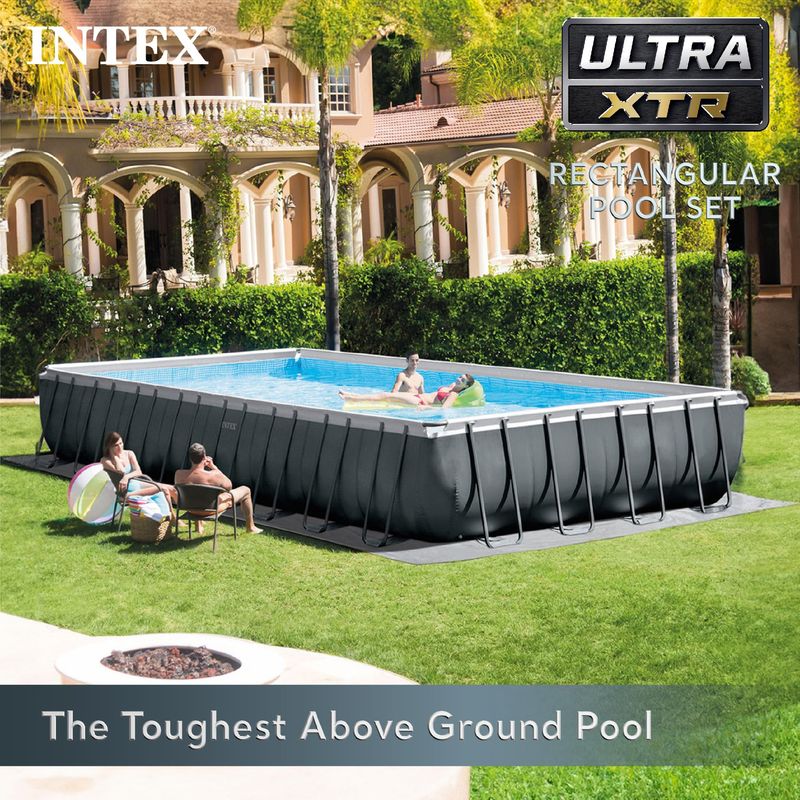
Crossing firmly into “absolutely never” territory are those large inflatable pools left in place indefinitely. Beyond killing the grass beneath, these create safety hazards and collect debris while screaming “temporary solution turned permanent eyesore.”
Water features should be properly installed with appropriate filtration and safety considerations. Designers recommend saving for a proper in-ground or quality above-ground pool rather than compromising with inflatable versions that damage property value and create maintenance nightmares.
17. Plastic Lawn Ornaments Like Gnomes

While the occasional garden gnome might spark joy for some, designers place mass-produced plastic creatures firmly on the banned list. These kitschy characters create visual clutter and often fade unevenly, becoming even more unsightly over time.
Quality outdoor spaces focus on architectural elements and plantings rather than novelty figures. For personality, designers recommend artistic sculptures in weather-appropriate materials or unique vintage finds that serve as true focal points rather than scattered plastic distractions.
18. Tacky Novelty Garden Signs
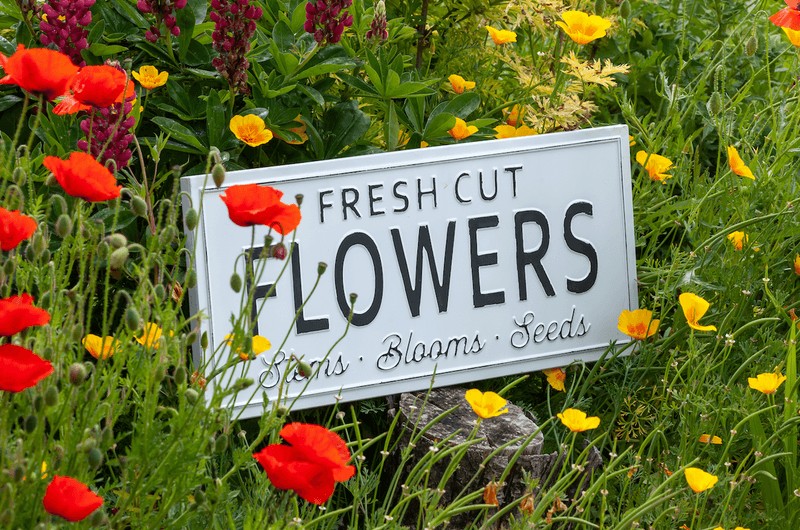
Those mass-produced wooden signs declaring “Welcome to Paradise” or featuring tired jokes about gardening? Designers consider these the equivalent of bumper stickers for your landscape – cheap attempts at personality that actually diminish design integrity.
Thoughtful outdoor spaces communicate through quality materials and intentional planning rather than literal signage. If text elements are desired, professionals recommend custom house numbers, subtle wayfinding, or meaningful artistic pieces rather than generic platitudes from discount stores.
19. Plastic Fencing or Trellises
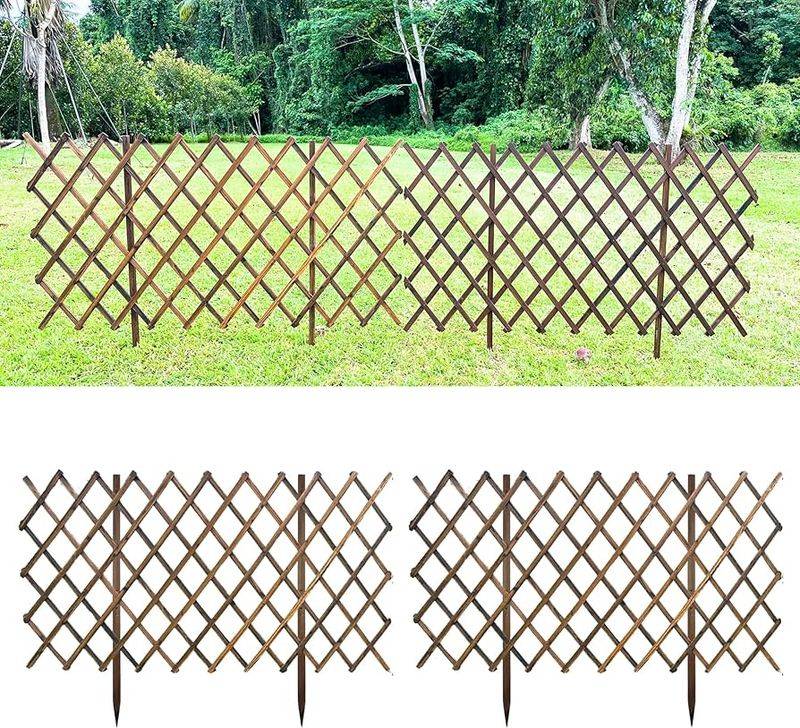
Attempting to mimic wood or metal with flimsy plastic rarely succeeds, especially in structural elements like fencing. These lightweight imposters warp, fade, and crack under sun exposure, ultimately looking worse than having no barrier at all.
Wood, metal, or quality composite materials age gracefully with proper maintenance, while plastic alternatives quickly reveal their true nature through deterioration and an unconvincing appearance.
20. Overly Bright, Flashing Outdoor Lights
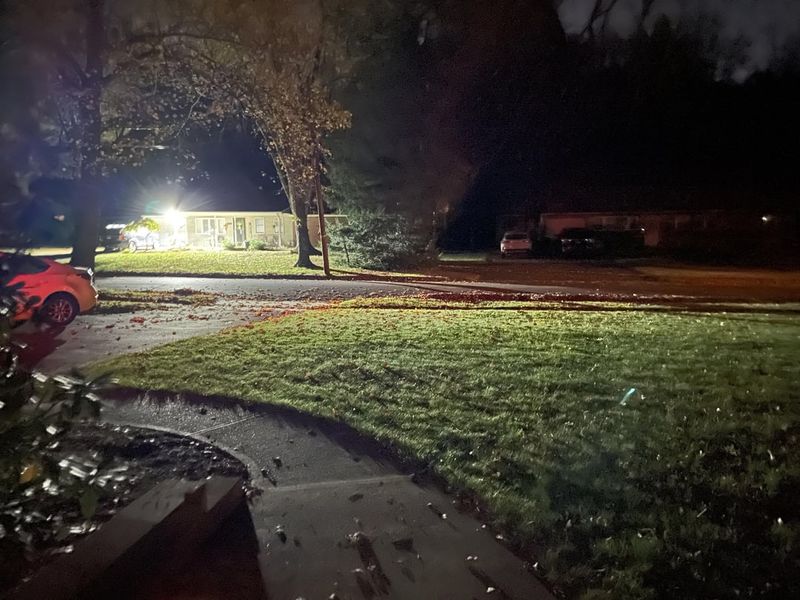
Crossing into the absolute forbidden zone are those motion-activated security floodlights that illuminate entire neighborhoods or decorative lights with seizure-inducing flash patterns. These harsh lighting solutions destroy evening ambiance and irritate neighbors.
Quality fixtures highlight architectural features and provide necessary visibility without creating light pollution or disrupting the peaceful evening atmosphere that makes outdoor spaces enjoyable.

